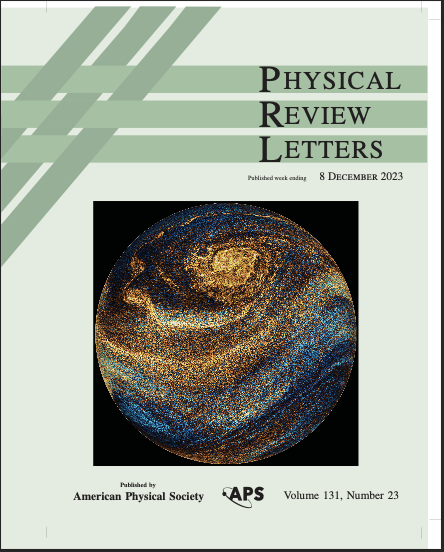Bio
I am a computational astrophysicist based in New York. My research is focused on understanding high-energy astrophysical phenomena around neutron stars and black holes.
Currently, I am an Associate Research Scientist in Columbia University (2023, New York, USA). I will start as an Associate Professor of Astrophysics at the Helsinki University in May 2024.
Previously, I was a joint Flatiron Research Fellow in Center for Computational Astrophysics, Flatiron Institute & Postdoctoral Reseacher in Columbia University (2020-2023; New York, USA). Before coming to New York, I was a Nordita Fellow in Nordic Institute for Theoretical Physics (2018-2020; Stockholm, Sweden).
High-Impact Publications
Another view into my research track can be gained by looking at my high-impact publications:
- Nature Communications 2024: Strongly interacting matter exhibits deconfined behavior in massive neutron stars
- Nature Physics 2020: Evidence for quark matter cores inside neutron stars
- PRL 2024: Repeated Cyclogenesis on Hot-Exoplanet Atmospheres with Deep Heating
- PRL 2022: Heating of Magnetically Dominated Plasma by Alfvén-Wave Turbulence
- PRX 2022: Multimessenger Constraints for Ultradense Matter
- PRL 2021: Coherent Electromagnetic Emission from Relativistic Magnetized Shocks
- PRL 2021: Combining Electromagnetic and Gravitational-Wave Constraints on Neutron-Star Masses and Radii
- ApJL 2023: Relativistic Collisionless Shocks in Inhomogeneous Magnetized Plasmas
- MNRASL 2021: A fully-kinetic model for orphan gamma-ray flares in blazars
In addition, my research has been featured in the cover of Physical Review Letters a few times:


Selected Publications
A list of some of the papers of mine that I like the most (in no particular order):
- Radiative turbulent flares in magnetically-dominated plasmas
- Detailed study on reconnection-mediated turbulent flares and their radiative properties. These flares can be relevant for explaining plasma energization in neutron star magnetospheres and black hole accretion disks.
- Radiation from rapidly rotating oblate neutron stars
- Extensive study on radiation characteristics from rapidly spinning neutron stars. We generalize previous works to include effects from oblate surfaces and quadrupole corrections to the spacetime metric.
- Evidence for quark matter cores inside neutron stars
- We show that when results from modern nuclear physics and perturbative QCD limits are combined together, they imply that the most massive neutron stars can have quark matter cores. Importantly, we show that even if there is no quark matter, the core is still made of exotic material that breaks the conformal limit (speed of sound exceeds square root of c/3).
- Neutron star M-R measurements from atmospheric model fits to X-ray burst cooling tail spectra
- By using a detailed Bayesian fitting procedure we show that it is possible to measure the neutron star radius very accurately from existing X-ray data. From this analysis we obtained a neutron star radius of 12.4 +- 0.4 km that is amazingly consistent with other measurements, and is still one of the most accurate measurements of NS radius.
All Publications Sorted by the Research Topic
In general, you can categorize my past work to (roughly) these topics:
Astroplasma physics
- A fully-kinetic model for orphan gamma-ray flares in blazars
- Coherent Electromagnetic Emission from Relativistic Magnetized Shocks
- Heating of Magnetically Dominated Plasma by Alfvén-Wave Turbulence
- Relativistic Collisionless Shocks in Inhomogeneous Magnetized Plasmas
- New applications for the Boris Spectral Deferred Correction algorithm for plasma simulations
- Radiative turbulent flares in magnetically-dominated plasmas
- Runko: Modern multi-physics toolbox for simulating plasma
Exoplanet atmosphere dynamics
Equation of state of ultra-dense matter
- Strongly interacting matter exhibits deconfined behavior in massive neutron stars
- Multimessenger Constraints for Ultradense Matter
- Combining Electromagnetic and Gravitational-Wave Constraints on Neutron-Star Masses and Radii
- Evidence for quark-matter cores in massive neutron stars
- Bayesian parameter constraints for neutron star masses and radii using X-ray timing observations of accretion-powered millisecond pulsars (also neutron star physics)
- Equation of state constraints for the cold dense matter inside neutron stars using the cooling tail method (also X-ray bursts)
General relativity/ray tracing
- General Purpose Ray Tracing and Polarized Radiative Transfer in General Relativity
- artpol: Analytical ray-tracing method for spectro-polarimetric properties of accretion disks around Kerr black holes
Neutron star (astro)physics
- Neutron Star Atmosphere-Ocean Dynamics
- Oblate Schwarzschild approximation for polarized radiation from rapidly rotating neutron stars
- Magnetospheric return-current-heated atmospheres of rotation-powered millisecond pulsars
- Pulsar Wind-heated Accretion Disk and the Origin of Modes in Transitional Millisecond Pulsar PSR J1023+0038
- Kilohertz quasi-periodic oscillations from neutron star spreading layers
- Radiation from rapidly rotating oblate neutron stars
- Models of neutron star atmospheres enriched with nuclear burning ashes
Machine learning
- Segmentation of turbulent computational fluid dynamics simulations with unsupervised ensemble learning
- Exploring helical dynamos with machine learning: Regularized linear regression outperforms ensemble methods
X-ray bursts from neutron stars
- Evidence for the Photoionization Absorption Edge in a Photospheric Radius Expansion X-Ray Burst from GRS 1747-312 in Terzan 6
- Basic parameters of the helium-accreting X-ray bursting neutron star in 4U 1820-30
- Neutron star mass and radius measurements from atmospheric model fits to X-ray burst cooling tail spectra
- Variable spreading layer in 4U 1608-52 during thermonuclear X-ray bursts in the soft state
- Flux decay during thermonuclear X-ray bursts analysed with the dynamic power-law index method
- The direct cooling tail method for X-ray burst analysis to constrain neutron star masses and radii
- Detection of burning ashes from thermonuclear X-ray bursts
- The influence of accretion geometry on the spectral evolution during thermonuclear (type I) X-ray bursts
- The effect of accretion on the measurement of neutron star mass and radius in the low-mass X-ray binary 4U 1608-52